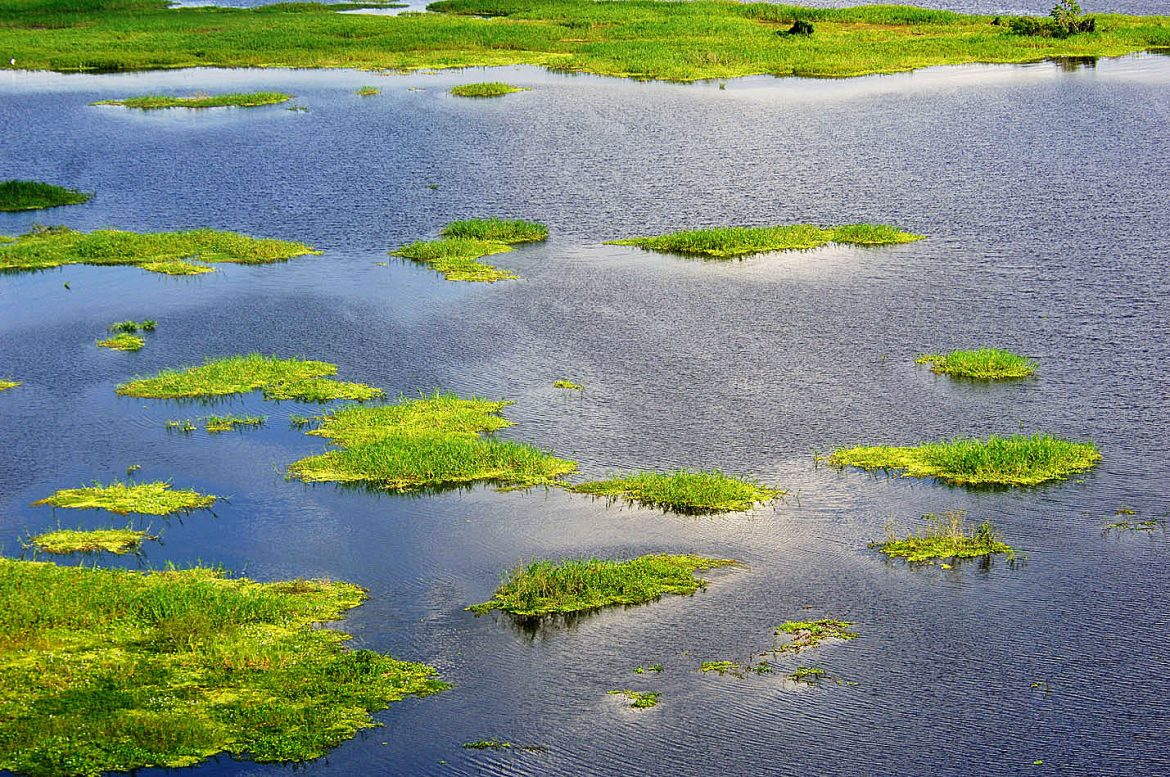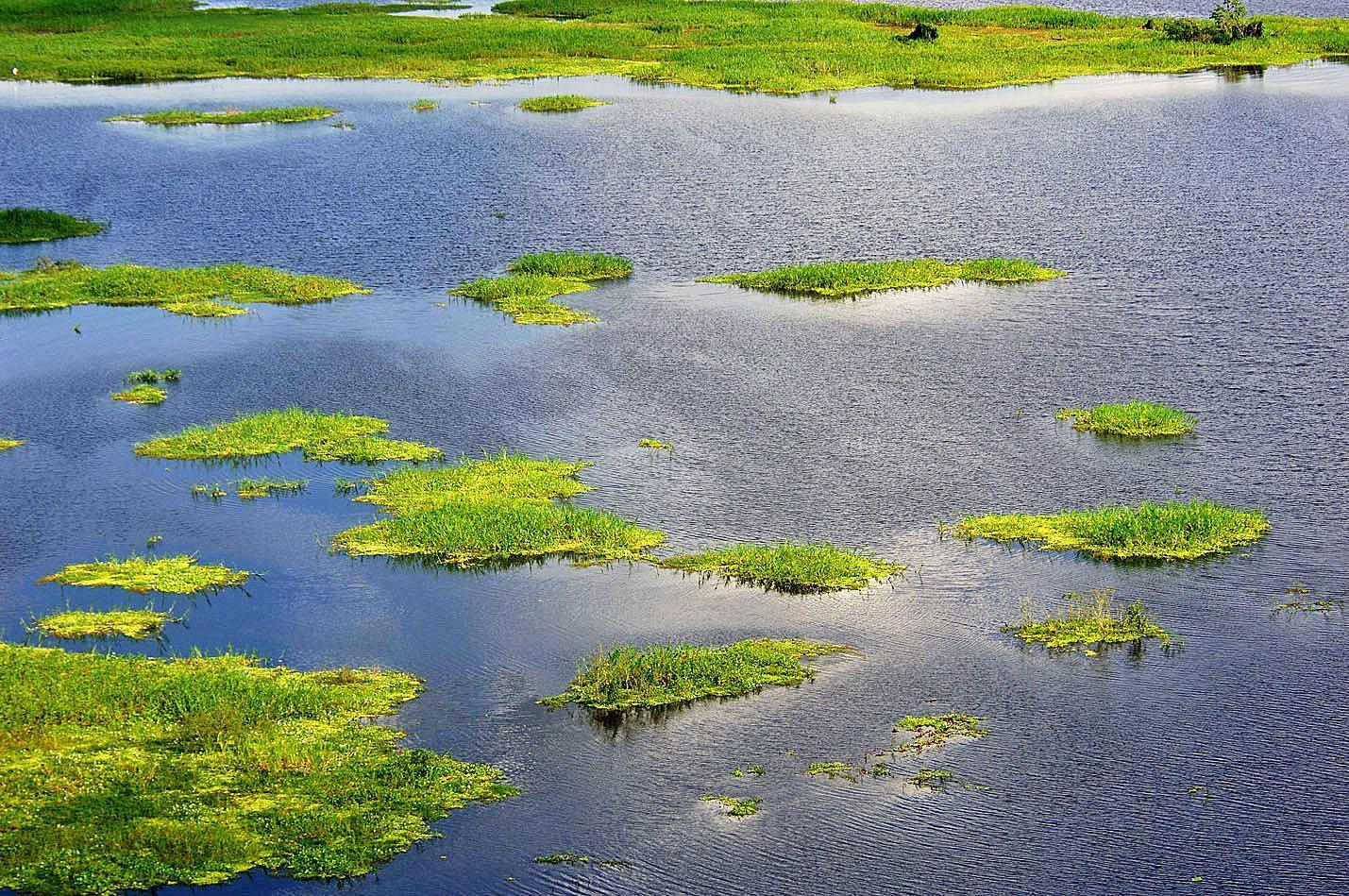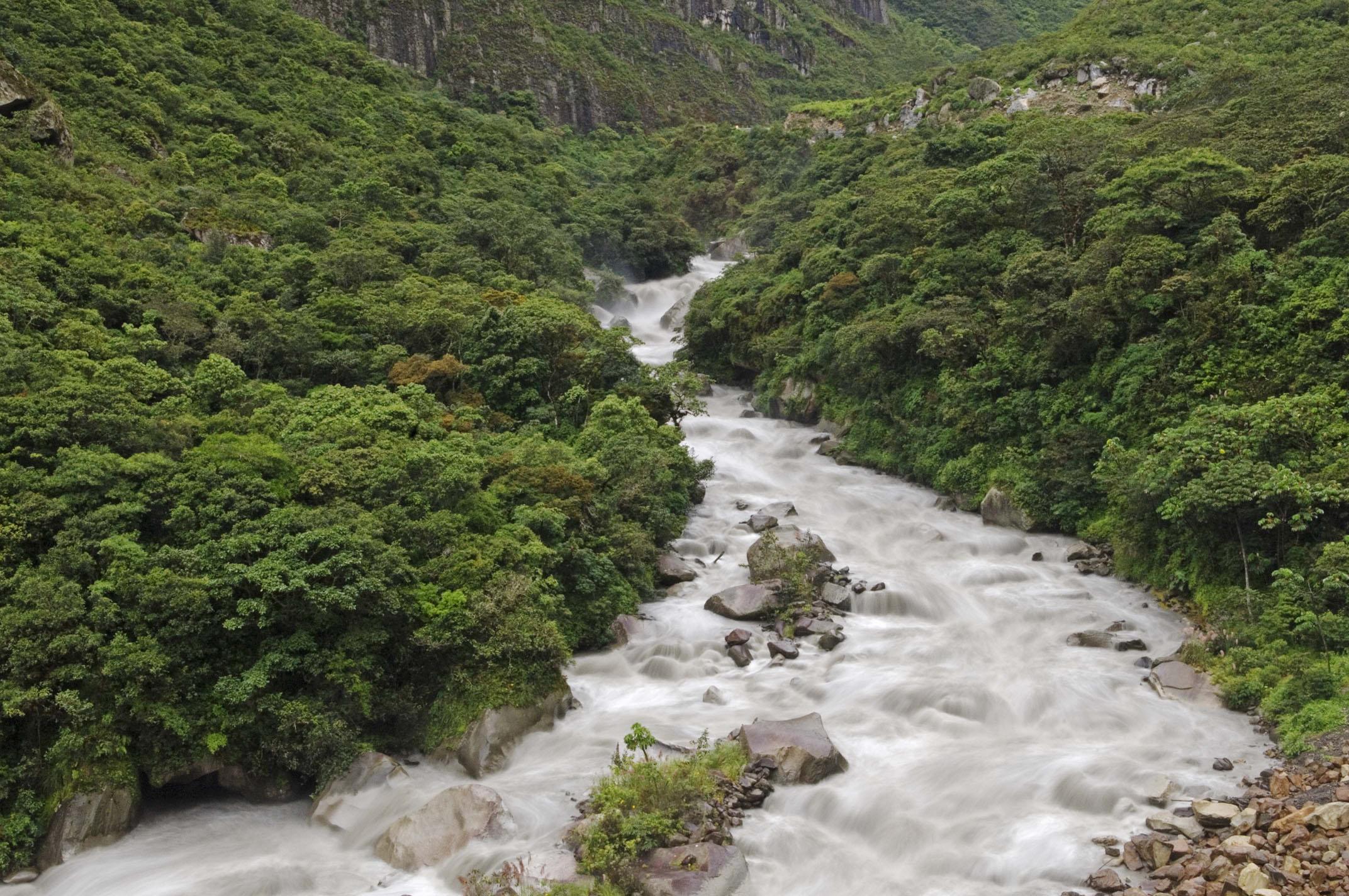
 Flood pulses are the natural cycles of water that occur in regions such as the Amazon Basin between the high and low water seasons, defining the life of the ecosystem and the lives of species within it. Photo: Walter Wust.
Flood pulses are the natural cycles of water that occur in regions such as the Amazon Basin between the high and low water seasons, defining the life of the ecosystem and the lives of species within it. Photo: Walter Wust.
Natural processes usually occur cyclically, like rhythms and connections between living beings, humans, waters (fresh or sea, in swamps, lagoons or wastelands), trees or animals, repeated every certain time like heartbeats, driving and connecting the life cycles of nature. One such process is known as the flood pulse, a theory developed in the late 1980s that attempts to explain the interconnection between the expansion and contraction patterns of tropical riparian ecosystems and the life cycles of all species that live in or around them, including terrestrial species, birds and plants. Flood pulses and their importance for understanding the relationships in freshwater bodies is a relatively new topic and applies exclusively to tropical areas (in order to understand how relationships occur in temperate and cold areas, several different theories have been put forth).
Floods are natural and repetitive processes that have occurred for thousands of years. In the rainy season, rivers feed on the large amounts of water available in the environment and grow. Depending on the specific conditions and their location on the planet, these bodies of water will go through high water and low water seasons for a specific duration. These flood pulses boost processes that affect the life cycles of countless species.
 During drought or low water season, the fish return to the headwater streams for their reproduction. Photo: Walter Wust.
During drought or low water season, the fish return to the headwater streams for their reproduction. Photo: Walter Wust.
Both migratory and non-migratory fish species live in a swamp (or várzea) ecosystem. When the swamp level drops in drought seasons (summer), its waters heat up and lose oxygen, and species that are not able to adapt to these difficult conditions leave. Migratory fish, for example, have a reproductive strategy that consists of leaving the swamps and going upstream. This is because in headwater streams the temperature is colder and there is more oxygenation, thereby boosting reproduction. When the water level rises because of rain, fish release their eggs in the middle of the water. The flood drags these eggs towards the lower part of swamps, where they have the possibility of carrying out their life cycle. When the newly hatched fish reach the lower parts, the aquatic life is at its moment of greatest movement and productivity in the swamp: insects, vegetables, algae, amphibian species, and birds boost all the trophic chains. The water that has entered due to flood opens channels that connect different bodies of water, facilitating the migration of species and, with them, the flow and exchange of food (or energy): nutrients and organic matter from the forest around the swamp enter the ecosystem, habitat is expanding and there are many places for species to hide and feed. Plants grow, flourish, and bear fruit; animals feed, grow, and some reproduce. The newly arrived larvae of migratory fish have abundant food to grow rapidly into young fish that will soon be the new adults in the population. Human activities such as fishing, water transport, and even tourism are benefited by this increased level of life and energy.
After this flood (that is full of life), the water level begins to drop and the swamp conditions start to change, thus being favorable to some species and not to others, so a new migratory movement begins. Waters are withdrawing from the flooded areas, leaving the soils fertilized, ready for the growth of certain species of plants, and suitable for some crops. At the minimum water level, the migratory fish return to river headwaters seeking cold and oxygenated waters and to lay their eggs, and the cycle begins again because of rains and flood pulses.
A human affair
However, despite the importance of flood pulses and their essential role in the life cycles of many species, flooding of bodies of water is seen as something negative due to their possible effects on human beings, such as intense floods due to climate change, for example, and prolonged floods since water cannot find a clear path to flow. The main challenge in this regard lies in human activity: disasters occur because human beings have built their settlements and carried out their activities without respecting water, its rhythms, and its territories.
Unlike the huge marine and terrestrial ecosystems, the land area occupied by freshwaters (lagoons, lakes, rivers, aquifers) is extremely small, but even so, it is home to a little more than half of the fish species on the planet, and one out of ten of them are known species. The delicate balance of these aquatic ecosystems is increasingly affected by human activities, endangering their services in favor of the environment and humans: many of them have currently lost the ability to purify and make water drinkable, and some rivers dry out before reaching the sea, affecting the life cycles of the species that depend on them. For this reason, the freshwater biodiversity crisis has drawn attention to a more suitable freshwater management and the need to rethink the relationship with these ecosystems.
However, reconsidering the relationship with water, says Silvia López Casas, a researcher in fish ecology, also implies rethinking the relationship with the forests that surround water sources and the species that inhabit them because there is a deep interconnection between them, as evidenced by the flood pulse theory: forest health influences river health and river health influences forest health in a continuous flow. When we talk about conserving water resources, we do not refer only to water because it is not the only thing that we want to conserve; it is the whole life associated with water; that is to say, the whole life on the planet: fish, clams, shrimp, including all non-timber forest products. “The water in the ecosystem cannot be replaced by anything else as it happens with all of the organisms since they are irreplaceable,” says Silvia López.
 Being aware of water rhythms and how they influence human population activities allows for better management of this natural resource. Photo: Walter Wust.
Being aware of water rhythms and how they influence human population activities allows for better management of this natural resource. Photo: Walter Wust.
Although the integrated freshwater management is different in each country as it responds to specific needs, it is necessary to point out that water (with its pulses and rhythms) knows no limits, so water management from one country has an effect on the other, especially if they share the same biodiverse and interconnected area such as the Amazon. Here, governance and the political-administrative matters are factors that must be essential for integrated and regional water management, says the ecologist.
There is still a long way to go in order to understand aquatic systems, even at the academic level. Flood pulses are a very useful tool in this process, but while studying and researching about it, it is necessary to develop mechanisms so that this knowledge transcends, raising awareness and promoting more positive practices and relationships with the environment.
***
To learn more about the flood pulses of the Amazon Basin, visit Flows and Floods on this Amazon Waters page.
Written by Carolina Obregón Sánchez
Consulted sources:
Silvia López Casas, Ph.D. in Biology from the University of Antioquia and a researcher in fish ecology and freshwater ecosystems.
Environmental glossary: “What is the ‘flood pulse’?” by WWF.


